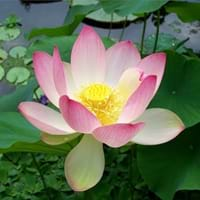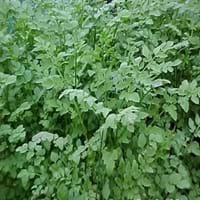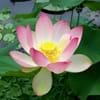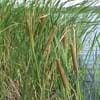Life Span
Perennial
Perennial
Type
Aquatics
Tender Perennial
Origin
Southern Asia
Southern Asia, Southeastern Asia, India, China, Japan, Australia
Types
Not Available
Not Available
Number of Varieties
Not Available
Habitat
Ponds
Bog Garden, Cultivated Beds, Ponds
USDA Hardiness Zone
9-12
9-11
AHS Heat Zone
12-3
Not Available
Sunset Zone
21,22
H1, 9, 14, 15, 16, 17, 18, 19, 20, 21, 22, 23, 24
Habit
Clump-Forming
Spreading
Flower Color
White, Red, Pink, Light Pink, Hot Pink, Rose, Coral
White
Flower Color Modifier
Bicolor
Bicolor
Fruit Color
Non Fruiting Plant
Not Available
Leaf Color in Spring
Lime Green, Sea Green
Green
Leaf Color in Summer
Lime Green, Sea Green
Green
Leaf Color in Fall
Lime Green, Sea Green
Green
Leaf Color in Winter
Not Available
Light Green
Leaf Shape
Orbicular
simple-pinnate or double-pinnate
Plant Season
Summer, Fall
Summer, Fall
Sunlight
Full Sun, Partial Sun
Full Sun, Partial Sun, Partial shade
Type of Soil
Clay, Loam
Clay, Loam, Sand
The pH of Soil
Neutral
Acidic, Neutral, Alkaline
Soil Drainage
Poorly Drained
Poorly Drained
Bloom Time
Late Spring, Early Summer, Summer, Late Summer
Late Summer, Early Fall
Tolerances
Wet Site
Drought
Where to Plant?
Container, In Water, Pot
Ground
How to Plant?
From Rhizomes, Seedlings
Divison, Layering, Seedlings, stem tip cuttings
Plant Maintenance
Medium
Medium
Watering Requirements
Requires 4 to 8 inches of water above the soil line
Needs Very high moisture
In Summer
Lots of watering
Lots of watering
In Spring
Moderate
Moderate
In Winter
Average Water
Average Water
Soil pH
Neutral
Acidic, Neutral, Alkaline
Soil Type
Clay, Loam
Clay, Loam, Sand
Soil Drainage Capacity
Poorly Drained
Poorly Drained
Sun Exposure
Full Sun, Partial Sun
Full Sun, Partial Sun, Partial shade
Pruning
Cut away fading foliage
Remove dead leaves
Fertilizers
20N–4.4P–16.6K at 20-d intervals
Apply 10-10-10 amount
Pests and Diseases
Aphids, Caterpillars
Aphids, Armyworm, Bacterial Blight, Damping off, Downy mildew
Plant Tolerance
Drought
Drought
Flower Petal Number
Single, Double, Semi-Double
Single
Fragrant Flower
Yes
Not Available
Fragrant Leaf
No
Not Available
Fragrant Bark/Stem
No
Not Available
Foliage Texture
Bold
Fine
Foliage Sheen
Matte
Matte
Invasive
Sometimes
Sometimes
Attracts
Beetles, Insects
Bees, Flies, Insects
Allergy
Constipation
no allergic reactions
Aesthetic Uses
Beautification
Bog Garden, Ground Cover
Beauty Benefits
Promotes healthy skin, Provides herbal hair care
Not Available
Environmental Uses
Air purification
Air purification
Medicinal Uses
Antidiarrhoeal, Astringent, Cancer, Cardiotonic, Febrifuge, Hypotensive, Resolvent, Stomachic, Tonic
Depurative, Febrifuge, Styptic
Part of Plant Used
Flowers, Leaves, Root, Seeds, Stem
Leaves, Root, Seeds
Other Uses
Leaves are used to wrap small parcels, Roasted seed is used as a coffee substitute, Root is used as a vegetable
Used as a seasoning in soups, useful as a ground cover
Used As Indoor Plant
Yes
No
Used As Outdoor Plant
Yes
Yes
Garden Design
Feature Plant, Tropical, Water Gardens
Container, Edible, Groundcover, Herb / Vegetable, Water Gardens
Botanical Name
NELUMBO nucifera
OENANTHE javanica
Common Name
East Indian Lotus, Sacred Lotus
Java Water Dropwort, Water Celery, Water Parsley
In Hindi
पवित्र कमल
Water Celery
In German
Heiliges Lotus
Wasser Sellerie
In French
Lotus Sacré
Céleri d'eau
In Spanish
loto sagrado
El apio agua
In Greek
ιερή Lotus
Σέλινο νερό
In Portuguese
Lotus sagrado
Aipo água
In Polish
Sacred Lotus
Seler Woda
In Latin
sacra Lotus
Aqua Apium
Phylum
Magnoliophyta
Magnoliophyta
Class
Magnoliopsida
Magnoliopsida
Family
Nymphaeaceae
Apiaceae
Clade
Angiosperms, Eudicots
Angiosperms, Asterids, Eudicots
Tribe
Not Available
Oenantheae
Subfamily
Nelumbonaceae
Apioideae
Number of Species
Not Available
Importance of Sacred Lotus and Water Celery
Want to have the most appropriate plant for your garden? You might want to know the importance of Sacred Lotus and Water Celery. Basically, these two plants vary in many aspects. Compare Sacred Lotus and Water Celery as they differ in many characteristics such as their life, care, benefits, facts, etc. Every gardener must at least have the slightest clue about the plants he wants to plant in his garden. Compare their benefits, which differ in many ways like facts and uses. The medicinal use of Sacred Lotus is Antidiarrhoeal, Astringent, Cancer, Cardiotonic, Febrifuge, Hypotensive, Resolvent, Stomachic and Tonic whereas of Water Celery is Depurative, Febrifuge and Styptic. Sacred Lotus has beauty benefits as follows: Promotes healthy skin and Provides herbal hair care while Water Celery has beauty benefits as follows: Promotes healthy skin and Provides herbal hair care.
Compare Facts of Sacred Lotus vs Water Celery
How to choose the best garden plant for your garden depending upon its facts? Here garden plant comparison will help you to solve this query. Compare the facts of Sacred Lotus vs Water Celery and know which one to choose. As garden plants have benefits and other uses, allergy is also a major drawback of plants for some people. Allergic reactions of Sacred Lotus are Constipation whereas of Water Celery have no allergic reactions respectively. Having a fruit bearing plant in your garden can be a plus point of your garden. Sacred Lotus has no showy fruits and Water Celery has no showy fruits. Also Sacred Lotus is not flowering and Water Celery is not flowering . You can compare Sacred Lotus and Water Celery facts and facts of other plants too.





